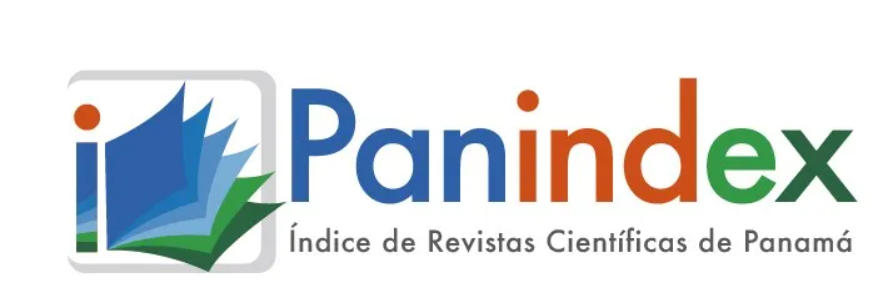The content of the publications and the links suggested in them are the sole responsibility of the authors and not of the METROPOLITAN UNIVERSITY OF EDUCATION, SCIENCE AND TECHNOLOGY (UMECIT) or DIALOGUS magazine. They are protected by international copyright laws as well as the UMECIT and DIALOGUS logos, hence their reproduction is totally prohibited.
This work is licensed under a Creative Commons Attribution-NonCommercial-NoDerivatives 4.0 International License.
The authors maintain the copyright and transfer the right of the first publication to the journal, with the article registered with Creative Commons Attribution-NonCommercial-NoDerivatives License, which allow others They can download the works published in this magazine and share them with other people, as long as their authorship is recognized, but they cannot be changed in any way nor can they be used commercially.
Authors are recommended to include their work in social networks such as Researchgate and institutional repositories once the article or visible fact has been published on the journal page, without forgetting to include the digital document identifier and the name of the journal.



Abstract
Educational inclusion seeks to ensure the access, participation and success of all people, without distinction, within the educational system. It involves eliminating barriers and promoting equal opportunities so that all students can fully develop their abilities and skills. It is based on principles of equity, justice and respect for diversity, seeking that all students have the same opportunities. Consequently, the purpose of this research is to explore the perceptions that the different actors of the Colombian Naval Colleges have about the constructs of social inclusion and exclusion. Methodologically, it is framed in the interpretative paradigm, specifically in phenomenology. In order to approach it, we made use of participant observation and in-depth interviews with key informants (parents, students and teachers) from two Colombian naval institutions. The results show that there is social exclusion due to various factors: socioeconomic status, military ranks, sexual diversity, various disabilities, among others, which are manifested through bullying, hate speech and exclusion. This reveals little commitment of the institution to the fact, but at the same time, immense possibilities to establish policies and actions for educational inclusion.
Keywords
References
Ávila, A. y Esquivel, V. (2009). Educación inclusiva en nuestras aulas. Obtenido de https://ceccsica.info/sites/default/files/content/Volumen_37.pdf
Borsani, M. (2020). Aulas inclusivas: teorías en acto. Rosario, Homo Sapiens Ediciones. . Obtenido de https://elibro-net.ezproxy.cecar.edu.co:2443/es/ereader/bibliocecar/177177?page=18.
Camargo, A. (2018). Breve reseña histórica de la inclusión en Colombia. (L. S. Revista Internacional de Apoyo a la Inclusión, Ed.) 4 (4). Obtenido de https://revistaselectronicas.ujaen.es/index.php/riai/article/download/4374/3588/14820#:~:text=En%20Colombia%20persisten%20dificultades%20que,amplios%20sectores%20de%20la%20sociedad.
Díaz, L. y Rodríguez, L. (2016). Educación inclusiva y diversidad funcional: Conociendo realidades, transformando paradigmas y aportando elementos para la práctica. doi:https://doi.org/10.14482/zp.24.8721
Fernández Palacio, A. (2017). Neurodidáctica e inclusión educativa. Publicaciones didácticas, 80(1), 262-266. Fernández Palacio, A. (2017). Neurodidáctica e inclusión educativa. Publicaciones didácticas, 80(1), https://acortar.link/sqgIRf
García, A. (2020). Educación inclusiva y marco legal en Colombia. Una mirada desde la alteridad y las diferencias. DOI: https://doi.org/10.37511/tesis.v15n2a4
López, A. (2018). La escuela inclusiva: el derecho a la equidad y la excelencia educativa. Obtenido de [Recurso electrónico].: https://web-argitalpena.adm.ehu.es/pdf/USPDF188427.pdf
Matjasko, J.L. y Feldman, A.F. (2005). Transmisión emocional entre padres y adolescentes: La importancia de las características del trabajo y la calidad de la relación. Disponible en: https://psycnet.apa.org/record/2005-08864-011
Ministerio de Educación Nacional. (2017). Plan Nacional Decenal de Educación 2016-2026: el camino hacia la calidad y la equidad. Obtenido de https://eduteka.icesi.edu.co/pdfdir/men-pnde-2017.pdf
Moreno, A. y Ramos, R. (2021). Aulas inclusivas y atención a la diversidad: un estudio de caso I.ED La Paz Apartadó Antioquia. Obtenido de https://revistaeducacioninclusiva.es/index.php/REI/article/view/744
Organización de Estados Iberoaméricanos. (2021). Ningún país de Iberoamérica supera el 70% de avance en inclusión educativa, según un estudio de la OEI. Obtenido de https://oei.int/oficinas/secretaria-general/noticias/ningun-pais-de-iberoamerica-supera-el-70-de-avance-en-inclusion-educativa-segun-un-estudio-de-la-oei
Padrós, N. (2009). La teoría de la inclusión: entre el desarrollo científico y la casualidad cotidiana. Obtenido de https://www.researchgate.net/publication/28299995_La_teoria_de_la_inclusion_entre_el_desarrollo_cientifico_y_la_casualidad_cotidiana
Rosales, C. (2015). Cómo transformar el aula de integración en aula de inclusión. Obtenido de https://www.redalyc.org/articulo.oa?id=574661395005
Solórzano, R. y Batista, A. (2021). Fundamentos Pedagógicos de un Proceso de Enseñanza Aprendizaje Inclusivo de Estudiantes Universitarios con Ceguera. Obtenido de Revista Electrónica Entrevista Académica. No. 8, Vol IV. Diciembre 2021. Pp. 104-118: http://www.eumed.net/rev/reea
UNESCO. (2000). The Dakar Framework for Action. Education for All: Meeting our Collective Commitments. World Education Forum. Obtenido de https://unesdoc.unesco.org/ark:/48223/pf0000121147
UNESCO. (2005). Guidelines for Inclusion: Ensuring Access to Education for All. Obtenido de http://www.ibe.unesco.org/sites/default/files/Guidelines_for_Inclusion_UNESCO_2006.pdf
UNESCO. (2008). La educación inclusiva: el camino hacia el futuro. Obtenido de Ginebra: Organización de las Naciones Unidas: http://www.ibe.unesco.org/fileadmin/user_upload/Policy_Dialogue/48th_ICE/General_Presentation-48CIE
UNESCO. (2015). Declaración de Incheon. Educación 2030. Obtenido de http://unesdoc.unesco.org/images/0023/002338/233813M.pdf
UNESCO. (2016). Educación 2030: Declaración de Incheon y Marco de Acción para la realización del Objetivo de Desarrollo Sostenible 4: Garantizar una educación inclusiva y equitativa de calidad y promover oportunidades de aprendizaje permanente para todos. Obtenido de https://unesdoc.unesco.org/ark:/48223/pf0000245656_spa.
UNESCO. (2022). Qué debe saber acerca de la inclusión en la educación. Obtenido de https://www.unesco.org/es/education/inclusion/need-know
Downloads
Publication Facts
Reviewer profiles N/A
Author statements
- Academic society
- Universidad Metropolitana de Educación, Ciencia y Tecnología
- Publisher
- Universidad Metropolitana de Educación, Ciencia y Tecnología




















